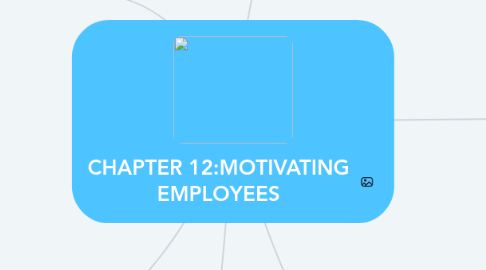
1. 12.4: JOB PERSPECTIVE ON MOTIVATION
1.1. The division of an organization's work among its employees
1.2. The application of motivational theories to jobs to increase satisfaction and performance
1.3. Two approaches to job design are:
1.3.1. 1. The traditional approach
1.3.2. 2. Fitting jobs to people
1.4. The five core of job characteristics are:
1.4.1. 1. Skill variety- how many different skills a job a required
1.4.2. 2. Task identity- how many different tasks are required to complete the work
1.4.3. 3. Task significance- how many other people are affected by the job
1.4.4. 4. Autonomy- how much discretion the jobs allows the worker
1.4.5. 5. Feedback- how much employees find out how well they're doing\
2. 12.5: REINFORCEMENT PERSPECTIVE
3. 12.6: USING COMPENSATION & OTHER REWARDS TI MOTIVATE
4. 12.1: MOTIVATING FOR PERFORMANCE
4.1. - The psychological processes that arouse and direct goal-directed behaviour
4.2. Two types
4.2.1. An extrinsic reward is the payoff such as money
4.2.1.1. An instrinsic reward is the satisfaction such as feeling of accomplishment
4.3. Major Perspective
4.3.1. 1. Content
4.3.1.1. 2. Process
4.3.1.1.1. 3. Job Design
5. 12.3: PROCESS PERSPECTIVE
5.1. Concerned with the thought process by which people decide to act
5.2. Three process perspective on motivation are:
5.2.1. 1. Equity theory
5.2.2. 2. Expectancy theory
5.2.3. 3. Goal-setting theory
6. 12.2: CONTENT PERSPECTIVES
6.1. Needs that motivate people. Defined as physiological or psychological deficiencies
6.2. Need based perspectives include:
6.2.1. 1. The hierarchy of needs theory
6.2.2. 2. The acquired needs theory
6.2.3. 3. The self-determination theory
6.2.4. 4. The two-factor theory

